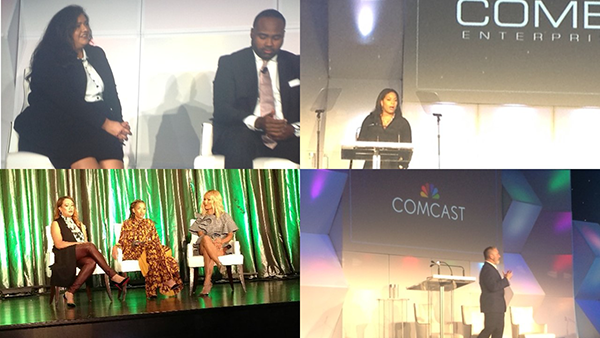
Author: Annette Malave, SVP/Insights, RAB
According to projections by the U.S. Census Bureau, by 2045 50.3% of the U.S. population will be comprised of what is now considered racial minorities – Hispanic, Black/African-American, Asian, multiracial and others. While 2045 is more than two decades away, the shift is already impacting the marketing and advertising perspectives and strategies among many of today’s top national advertisers.
Last week, during the 2018 Association of National Advertisers (ANA) “Multicultural Marketing & Diversity Conference,” CMOs, marketing strategists, bloggers, TV hosts and even comedians spoke to the behavior and buying power of these consumer segments.
The three-day event contained insights into best practices of reaching diverse consumers. Throughout the course of the conference, there was one overarching theme shared by all presenters/speakers – growth. Specifically, if a business is going to or wants to grow it will grow with multicultural consumers. Jose Velez-Silva, VP Multicultural Marketing Communications with Comcast, stated, “It’s mathematically impossible to grow without targeting the growing multicultural audience.”
Here are the major takeaways/advice:
Different messages for different people: As is the case with radio, consumers can connect with brands if that brand speaks to them. Consider who you are reaching and speak to them in an authentic and relevant way – not necessarily in language but in culture. Melissa Brown, Senior Manager, Marketing with The Home Depot, shared that, based upon proprietary research, Black/African-American women love to redecorate every three years. These women love everything about home and lifestyle, so when speaking to her, consider her likes, dislikes and always keep top of mind the importance of family and fashion. They have tremendous buying power and are also credited for changing the makeup industry. “Invest in Black women because they will over-deliver on that investment,” stated Michelle Ebanks, CEO, Essence Communications.
Get involved in the community: Radio excels at this. No other action says more than getting involved. Each advertiser shared examples of how their organization developed efforts to target different groups while sometimes addressing and recognizing the bias that each of these segments experiences. Marc Pritchard, Chief Brand Officer with P&G, shared one campaign revolving around Hispanics – a controversial topic within today’s environment. Using t-shirts as the item to deliver the message, slurs and negative statements were painted on with ketchup. Hispanics within the ads shared their opinions and views painted on the shirts and then placed them in the wash with Tide. Once cleaned, each of those individuals changed the statement using markers.
Diversity is not just about ethnicity, race, gender or language. Diversity is also about inclusion – of different mindsets, experiences and thoughts. Radio speaks to everyone and connects emotionally. Roger Frizzell, SVP and Chief Communications Officer with Carnival Corporation, raised the importance of diversity within an organization as well as marketing to their potential customers because “diversity of thinking brings about a diversity of ideas.” Encourage discussion and conversation. Use insights based upon psychographics versus demographics because you will learn more about your customer. Tony Rogers, Chief Member Officer with Sam’s Club, advises, “Don’t lose the core foundation of what good marketing is about. Know your customer and find out what resonates with them.”
Radio reaches everyone and delivers content that is not only relevant, but also resonates with each listener because of the connection radio has with the community and the personalities on those stations. These personalities speak to listeners in their respective languages and cultures. They know their audience and generate dialogue and conversations revolving around social, lifestyle, economic and political topics through radio’s diverse formats. Radio has always been inclusive, involved in its communities, and consistently able to deliver different messages for different people. Radio reaches the multicultural audience – the audience that should be targeted for any advertiser to grow their business.

